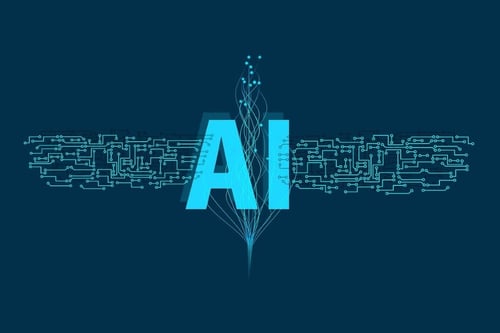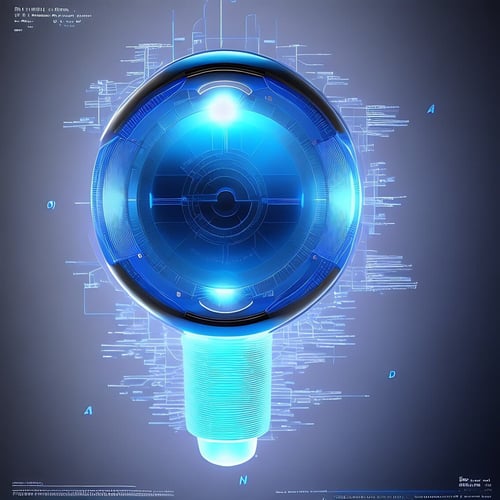In the rapidly evolving landscape of technology, the European Patent Office (EPO) plays a crucial role in determining the patentability of innovations related to software, artificial intelligence (AI), and quantum computing (QC). This article aims to provide IP counsels with a comprehensive overview of the criteria and practical tips for patenting these cutting-edge inventions at the EPO.
1. Patent Eligibility at the EPO
To secure a patent at the EPO, an invention must meet four fundamental criteria[1]:
- Technical Invention: The invention must be of a technical nature.
- Novelty: The invention must be new.
- Inventive Step: The invention must be non-obvious.
- Industrial Applicability: The invention must be capable of being used in industry.
Certain subject matters are explicitly excluded from patent eligibility[2], including discoveries, scientific theories, mathematical methods, aesthetic creations, schemes, rules and methods for performing mental acts, playing games, doing business, programs for computers, and presentations of information.
2. Patenting Software Inventions
Software as such is not patentable at the EPO[3], as it is considered non-technical. However, the specification “as such” hints to a narrow interpretation of this exclusion.
2.1. Two-hurdles approach
Software-related inventions can be patented before the EPO if they meet specific criteria. The EPO employs a two-hurdles approach to assess the patentability of software inventions[4]:
- Technicality[5]: Software method steps are non-technical features of a claim. The patent claim must thus in addition include at least one technical feature. This is often referred to as the "any hardware" approach, where the presence of a computer, processor, controller, storage medium, or signal etc. can render the subject matter of the claim technical.
- Inventiveness:[6] The invention must solve a technical problem in a non-obvious manner. The Comvik approach is used to separate technical and non-technical features and assess their contribution to solving the technical problem:
- Identify novel features (“distinguishing” features)
- Identify and separate technical and non-technical features
- Identify and separate features that contribute to solving the technical problem
Only novel technical and non-technical features that contribute to solving the technical problem are considered for inventive step. Consequently, even per se technical features may be disregarded if they don’t contribute to solving the technical problem. Care must be taken regarding merely potential technical effects or only implied intended uses of outputs of a software method. Because in the assessment of inventive step a “potential” technical effect which is achieved only when the output is put to a specific use can only be taken into account if that use is the only relevant use of the output[7].
2.2. Practical Tips
In order to take the first hurdle of technicality, include the description of a computer implemented method (i.e. the software executed on a computer).
To make sure the second hurdle (technical problem and its solution) is overcome, specify the technical problem(s) and how the technical effects of each feature solve the technical problem(s). Elaborate in particular on the technical effects of non-technical features. You can, for example, elaborate on technical problems in implementing non-technical aspects (e.g., business methods). Try to clearly point out the technical application and/or the technical implementation of the software.
3. Patenting AI Inventions
AI and machine learning (ML) algorithms are considered purely mathematical methods and are not patentable as such[8]. However, AI-related inventions can be patented if they solve a technical problem. Thereby, analogue considerations as for software apply.
3.1. Patentable aspects and technical applications of AI
The patentable aspects of AI include:
- the AI model as such (e.g. structure of a neural network),
- the training method or training set engineering,
- the training data (including methods for providing training data),
- the use of AI (as a tool),
- the input output structuring and
- prompt engineering.
Besides describing at least one of the above aspects of the AI, the specific application of the AI has to be described. Applying the AI in one of the following fields is in general considered as technical:
- medical inventions (e.g., identifying irregular heartbeats)[9],
- digital image processing (e.g., image classification)[10],
- control of machines,
- improving the internal functioning of a computer[11].
However, using AI for the following applications is regularly considered as non-technical:
- text classification or linguistic applications[12],
- mere sorting of technical data, without a technical use of the sorted data, and
- using any common AI / ML algorithm for solving a known (technical) problem.
3.2. Sufficient disclosure of AI
Describing the AI or ML algorithm merely as a „black box“ is not sufficient. For a ML the training must be reworkable. Consequently, too generic specification of training data is not sufficient[13]. For (non-ML) AI models the mathematical methods and corresponding criteria for the classification must be disclosed. The mathematical methods and corresponding criteria allowing to handle the input data (e.g., a matrix) and to obtain the output data (e.g., a look-up-table classification) or the actual specific form and construction of the criteria (e.g., a “matrix of inter-point metrics”) must be described[14].
3.3. Practical Tips
Regarding inventiveness, the two-hurdles approach needs to be applied like for conventional software (cf. 2.1. supra).
To ensure sufficient disclosure (enablement), specifics of the AI/ML algorithm besides a generic training method, generic training data and generic input and output parameters have to be disclosed:
- specific training method and/or specific training data AND/OR
- specific structure of the AI / ML model (incl. input + output layer) AND/OR
- specific input parameters and predicted output parameters AND/OR
- specific weights of the trained ML model.
4. Patenting inventions made by AI
The EPO does not limit patent eligibility to human-made inventions[15]. However, the right to a patent is reserved for humans, meaning a machine cannot be designated as an inventor according to the European Patent Convention (EPC)[16]. Yet, the designation of the inventor and the origin of the right to the invention are mere formal requirements according to the EPC[17].
Practical Tips
In cases where AI has contributed to the invention, the owner or user of the AI should be named as the inventor[18].
A statement in description on how/by whom the invention was conceived (e.g., as required in the US) is not necessary, but also not impermissible at the EPO and can, thus, be incorporated/remain in the application[19].
5. Patenting Quantum Computing Inventions
Inventions related to Quantum computing (QC) hardware are not excluded from patent eligibility merely based on their “QC” label.
QC algorithms on the other hand are assessed using the same two-hurdles approach as regular software inventions (cf. 2.1. supra). Consequently, a quantum algorithm without a technical application is unlikely to be patentable. While there is a strong opinion voiced by some practitioners that since QC is based on a fundamentally different physical effect than regular computing QC should not fall under the same exclusion as programs for regular computers. Nevertheless, including a technical application for QC algorithms in the patent application is highly recommendable.
Practical Tips:
For taking the first hurdle of technicality include the description of a computer implemented method executed on a quantum computer (i.e., a quantum computer implemented method).
To make sure the second hurdle (technical problem and its solution) is overcome, specify the technical problem(s) and how the technical effects of each feature solve the technical problem(s). Particularly focus on the technical effects of non-technical QC features. You can, for example, elaborate on technical problems in implementing non-technical aspects (e.g., sorting algorithms). Try to clearly point out the technical application and/or the technical implementation of the QC algorithm.
6. Conclusion
Patenting innovations related to software, AI, and QC at the EPO requires a thorough understanding of the technical and legal criteria. By focusing on the technical aspects of these inventions and providing detailed descriptions, IP counsels can navigate the complexities of patent eligibility and secure protection for their clients' cutting-edge technologies.
This blog article is co-authored by our professionals Sebastian Greding and Michael Nielsen. In the PDF, they explain how to patent inventions related to software (Computer-Implemented Inventions, CII), Artificial Intelligence (AI), and Quantum Computing (QC) at the European Patent Office (EPO).
👉 Download the PDF here.
[1] Article 52(1) EPC
[2] Article 52(2) EPC
[3] Article 52(2)(c) and 52(3) EPC
[4] G 1/16
[5] G 3/08, Reasons point 10.6; G 1/19, Reasons points 28-29
[6] T 641/00; G 1/19, Reasons points 30-34
[7] T2220/22, Reasons point 3.5-3.6; G 1/19, Reasons points 94 and 95
[8] Article 52(2)(a) and 52(3) EPC; Guidelines for Examination (2024) G-II, 3.3.1
[9] T 598/07
[10] T 1286/09
[11] T 0258/03
[12] T 233/09, T1316/09, T1358/09
[13] T 161/18
[14] T 509/18
[15] J 8/20 + J 9/20, Reasons point 4.6.2
[16] Art. 60(1) EPC; J 8/20 + J 9/20, Reasons point 4.3.9
[17] Art. 81 EPC; J 8/20 + J 9/20, Reasons point 4.6.3
[18] J 8/20 + J 9/20, Reasons 4.6.6
[19] J 8/20 + J 9/20, Reasons 4.3.7




